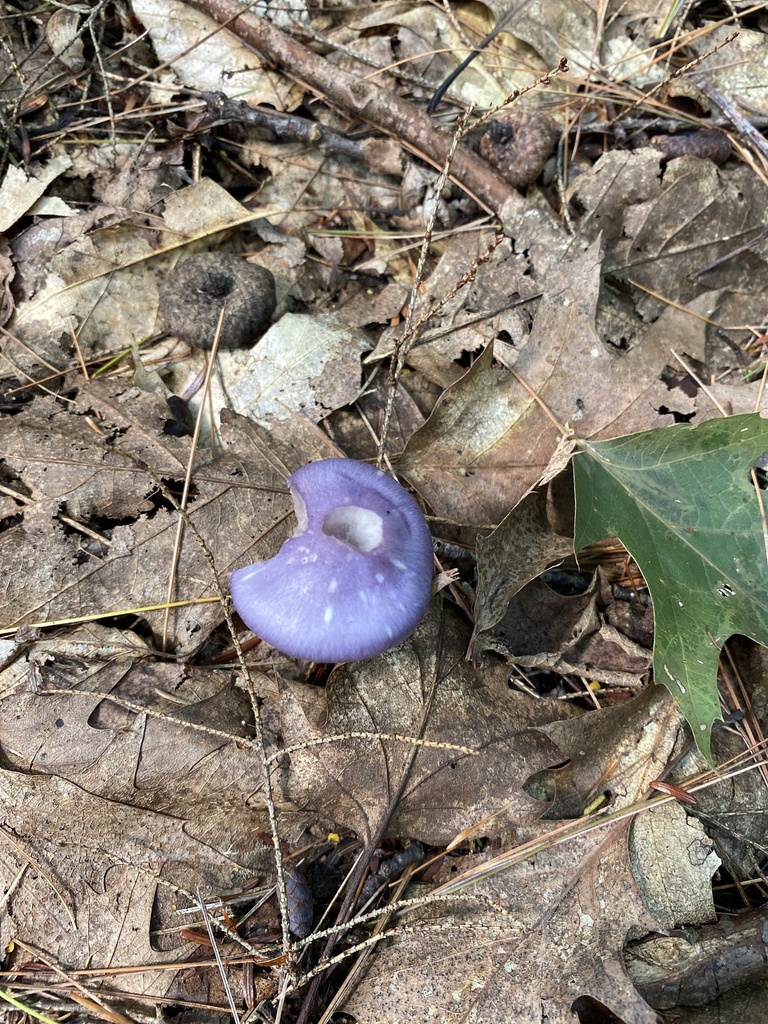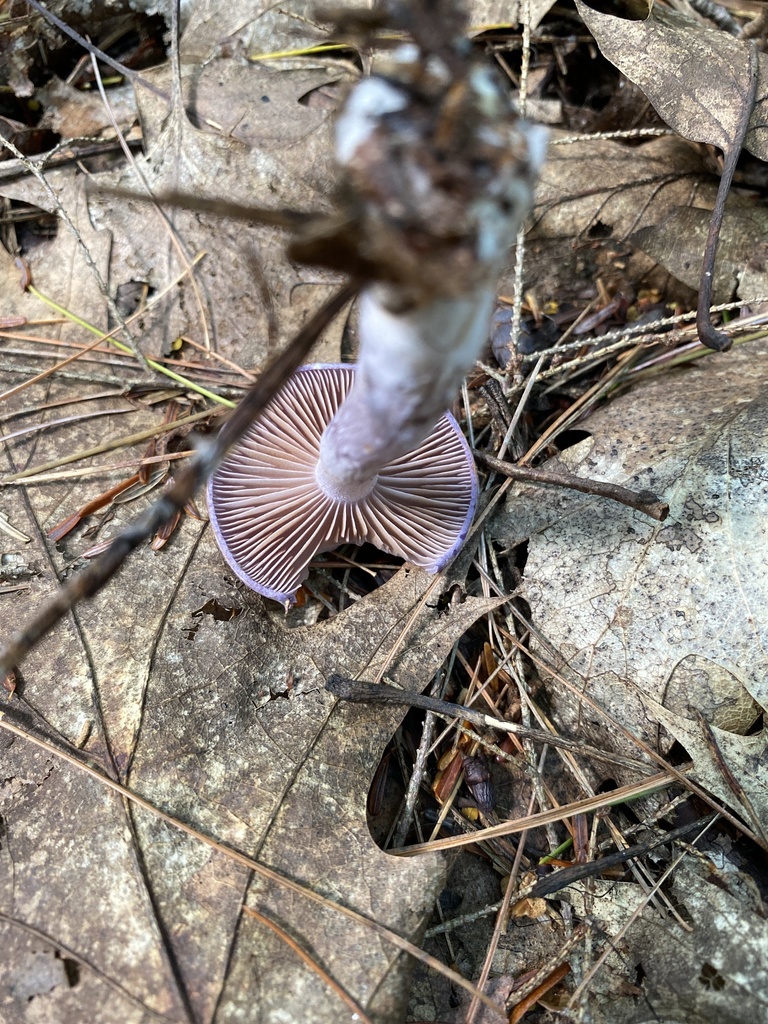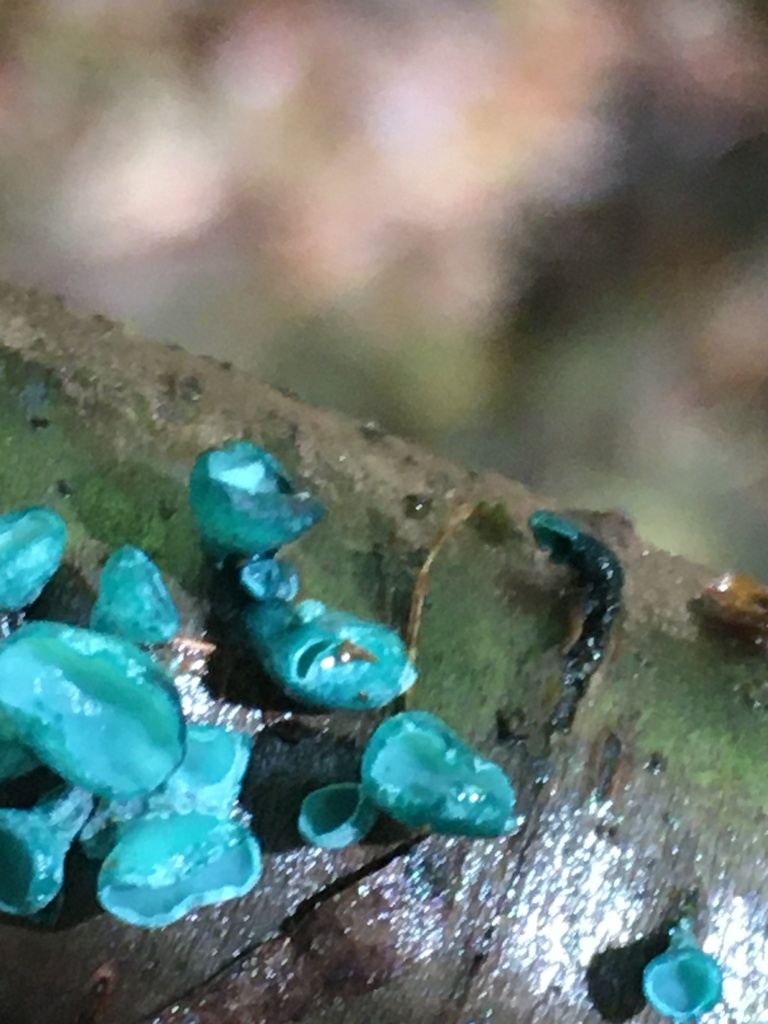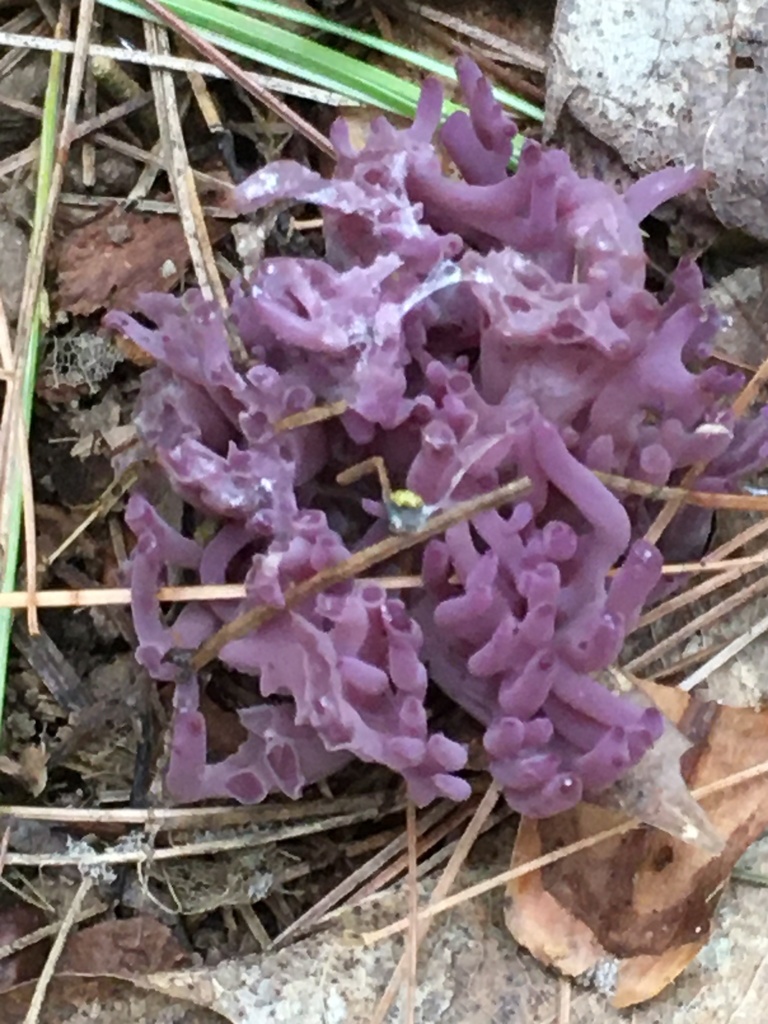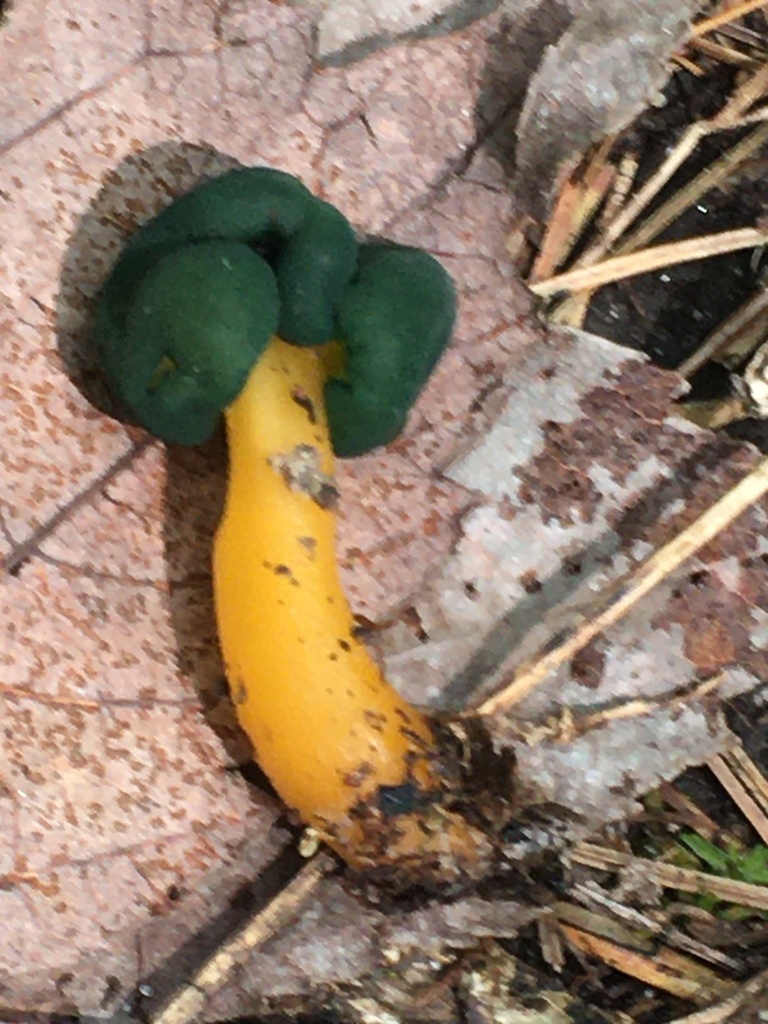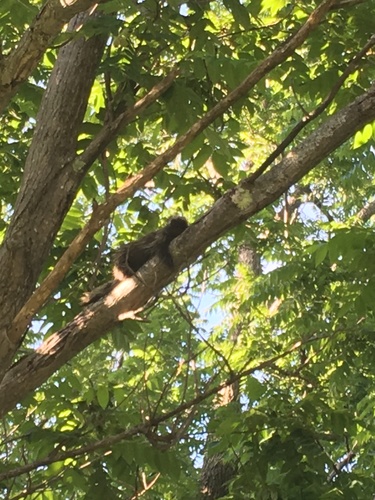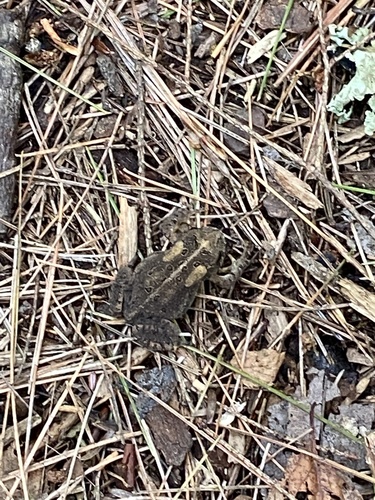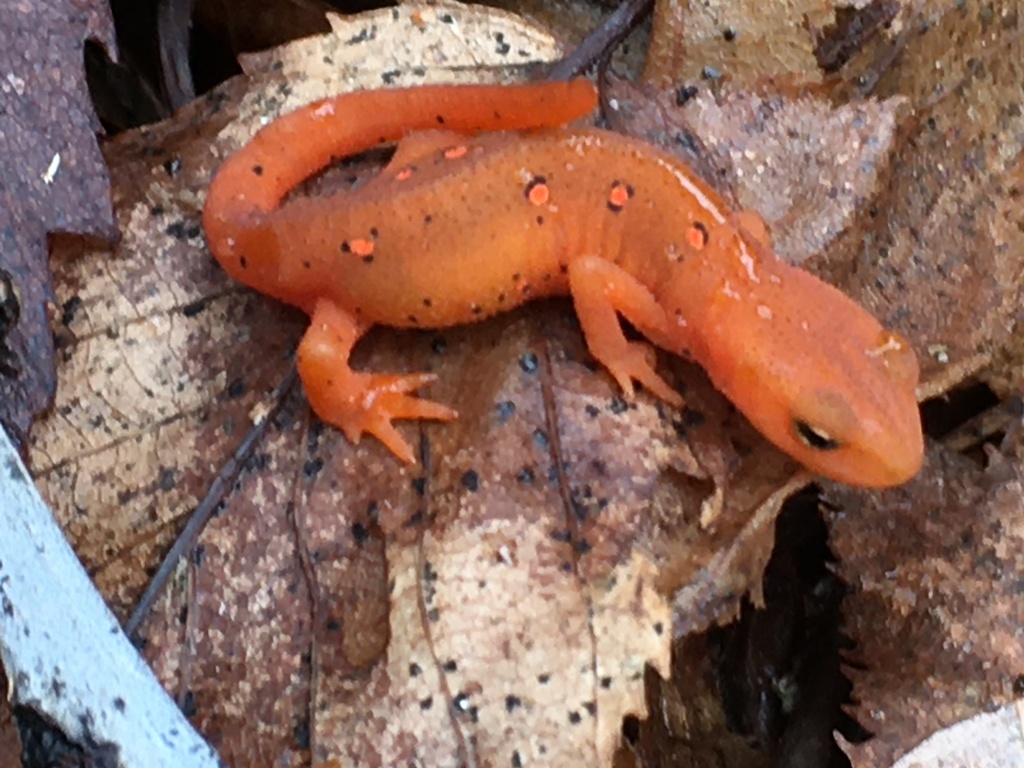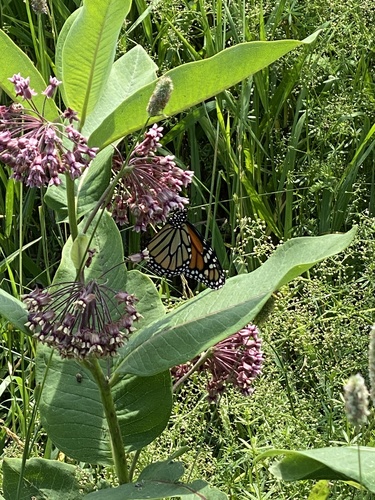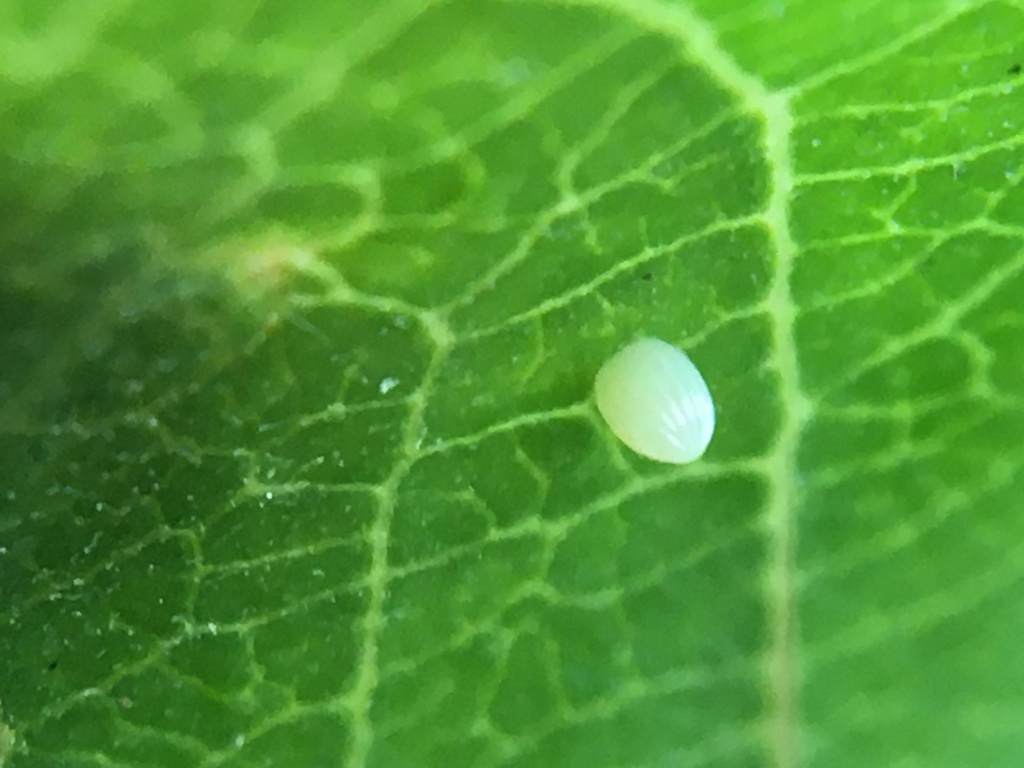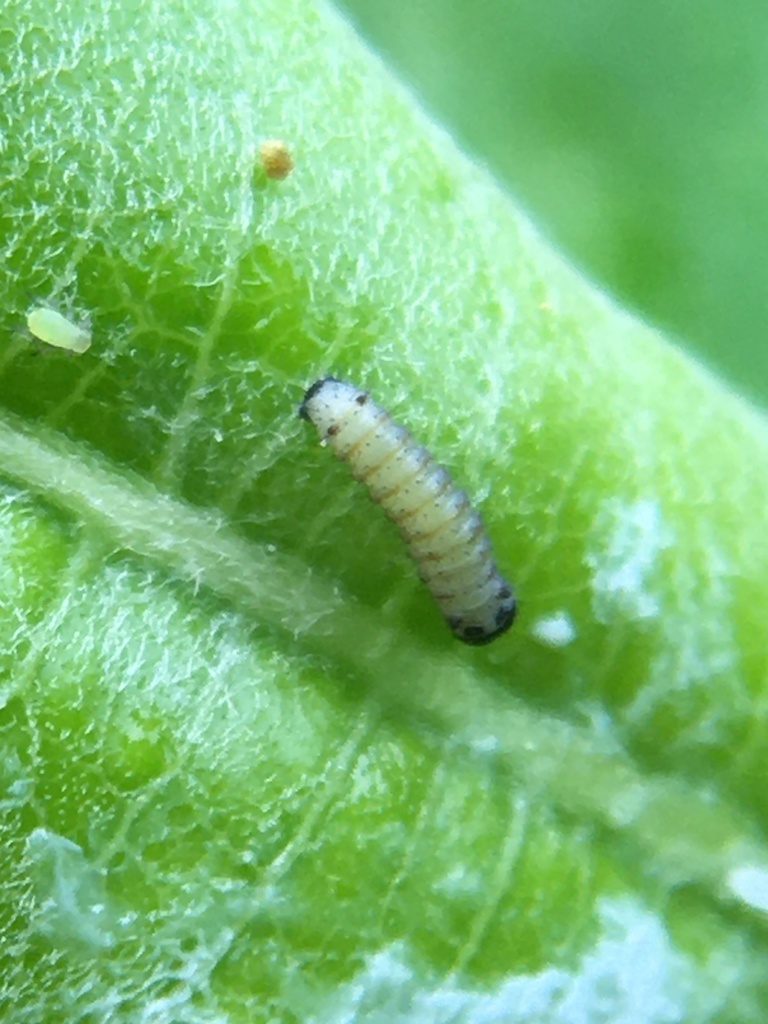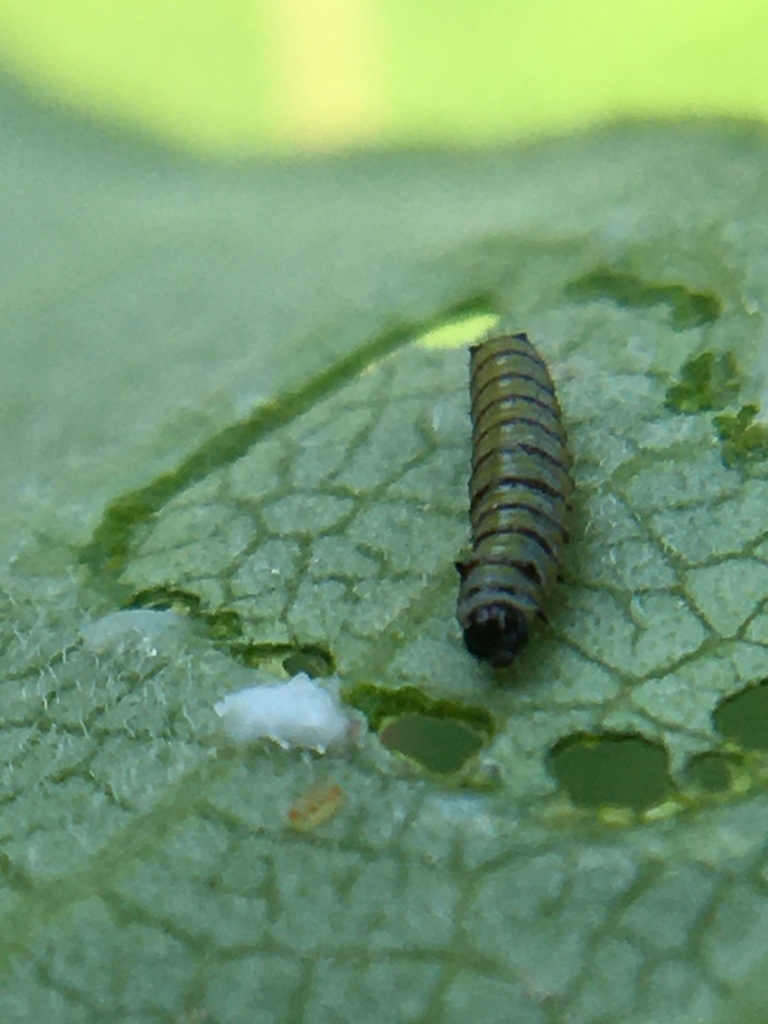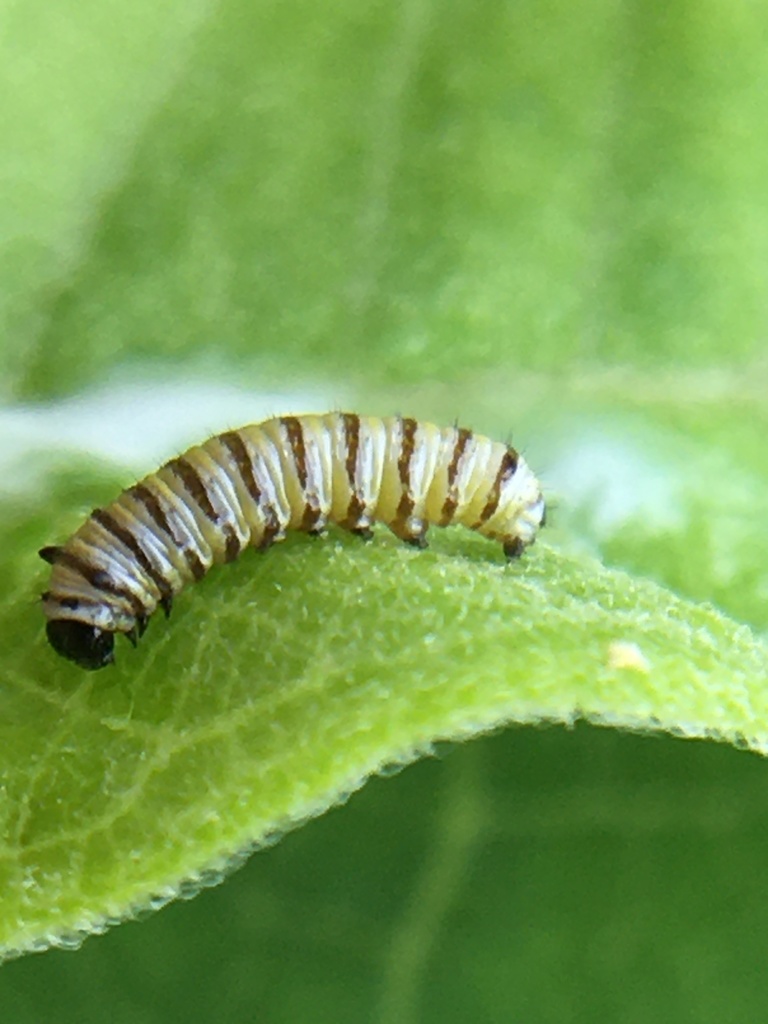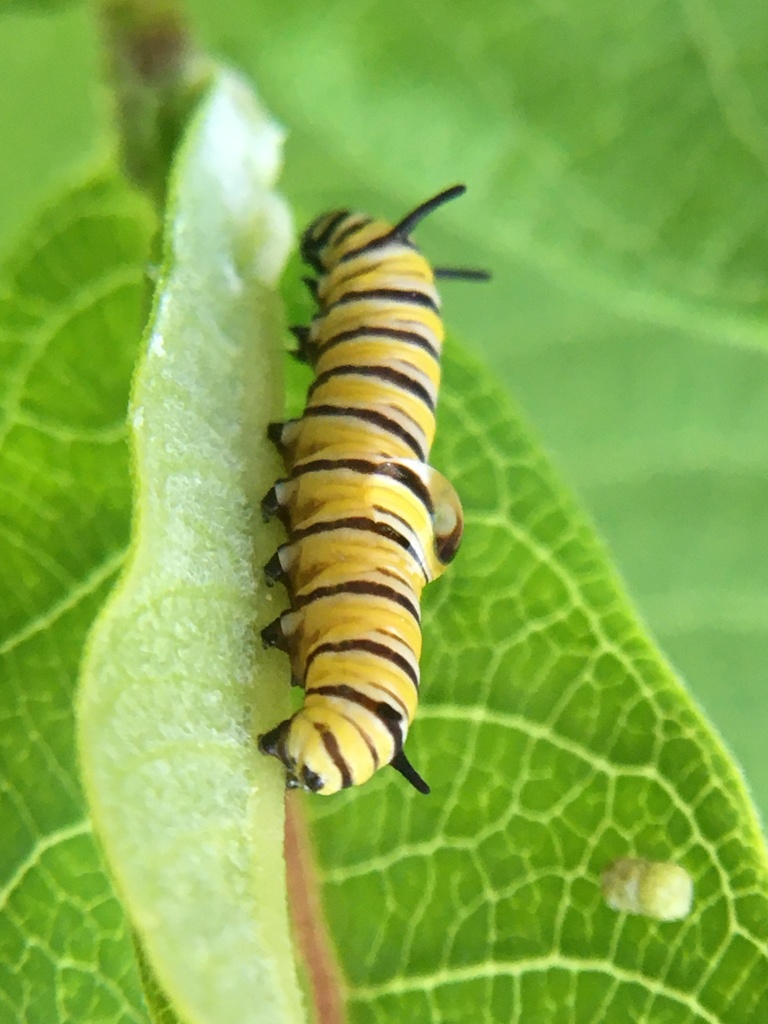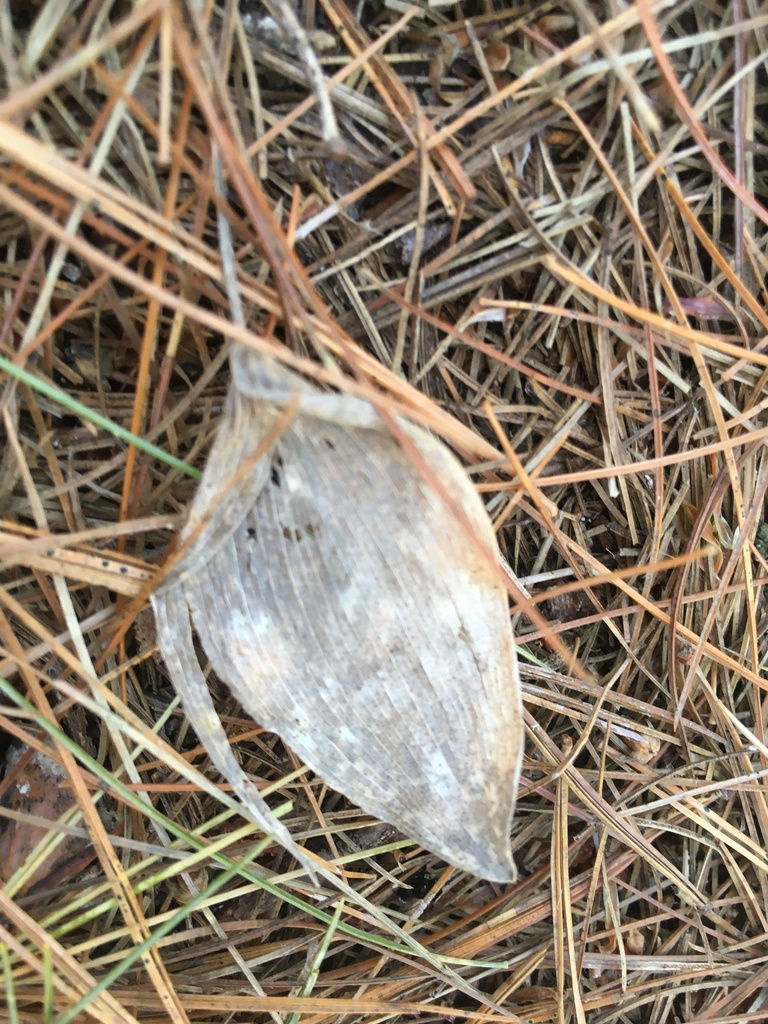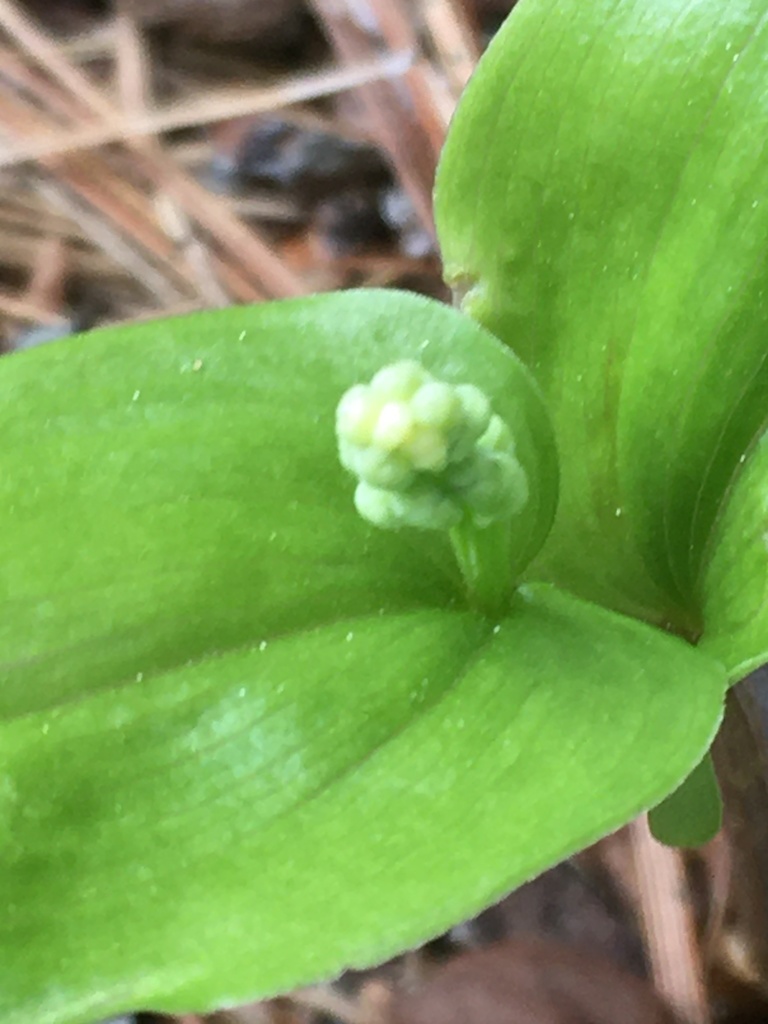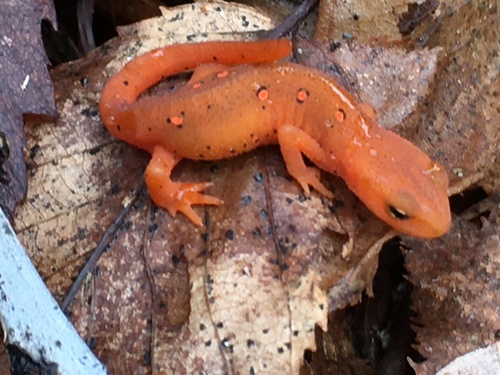Last summer, the generation of Monarch Butterflies that hatched in New Hampshire made the long journey south to lay their eggs. All spring they've been migrating north making it a little closer with each generation. Over the past week, we've begun to see adult Monarchs in the fields at Prescott Farm again. By watching the milkweed closely, we'll be able to observe their lifecycle.
Milkweed

Monarch butterflies lay their eggs on milkweed plants and the caterpillars eat the leaves. However, this isn't quite as easy as it sounds. The milkweed plant defends itself.
Eggs

Caterpillars



In order to eat milkweed, young caterpillars must first 'mow' the fuzz from the milkweed leaves. Look around the tiny caterpillar in the first photo to see how the leaf has less fuzz near the caterpillar.
Then, they must contend with the sap of the plant as they eat. This sap is poisonous to many animals. If the caterpillars eat too much they will die. Caterpillars strategically cut the veins bringing sap into the leaf they are eating, but ingesting some sap is inevitable as they munch on the leaves. It is the milkweed sap that makes the caterpillars poisonous to their predators and justifies their bright warning stripes.



Chrysalis

Monarch caterpillars leave their milkweed plant to form their chrysalis somewhere nearby. This can make the chrysalis more difficult to find.
Adults
Monarchs Butterflies then emerge from their chrysalis, dry their wings, and fly off as adults to continue the cycle.



All photos are in the public domain. Chrysalis photo by Dan McIntyre (
@ab6ro), emerging monarch photos by Diana Foreman (
@artemis224), adult Monarch photo by Kathy Daniel (
@kdaniel20816), milkweed, egg, and caterpillar photos by aspring. Source for milkweed and caterpillar interactions: Summer Wildflowers of the Northeast: A Natural History by Carol Gracie.
















































